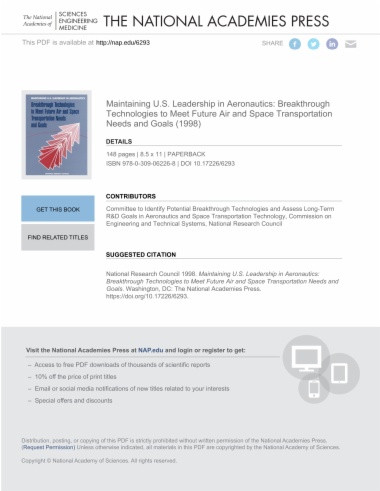

After the completion of the National Research Council (NRC) report, Maintaining U.S. Leadership in Aeronautics: Scenario-Based Strategic Planning for NASA's Aeronautics Enterprise (1997), the National Aeronautics and Space Administration (NASA) Office of Aeronautics and Space Transportation Technology requested that the NRC remain involved in its strategic planning process by conducting a study to identify a short list of revolutionary or breakthrough technologies that could be critical to the 20 to 25 year future of aeronautics and space transportation. These technologies were to address the areas of need and opportunity identified in the above mentioned NRC report, which have been characterized by NASA's 10 goals (see Box ES-1) in "Aeronautics & Space Transportation Technology: Three Pillars for Success" (NASA, 1997). The present study would also examine the 10 goals to determine if they are likely to be achievable, either through evolutionary steps in technology or through the identification and application of breakthrough ideas, concepts, and technologies.